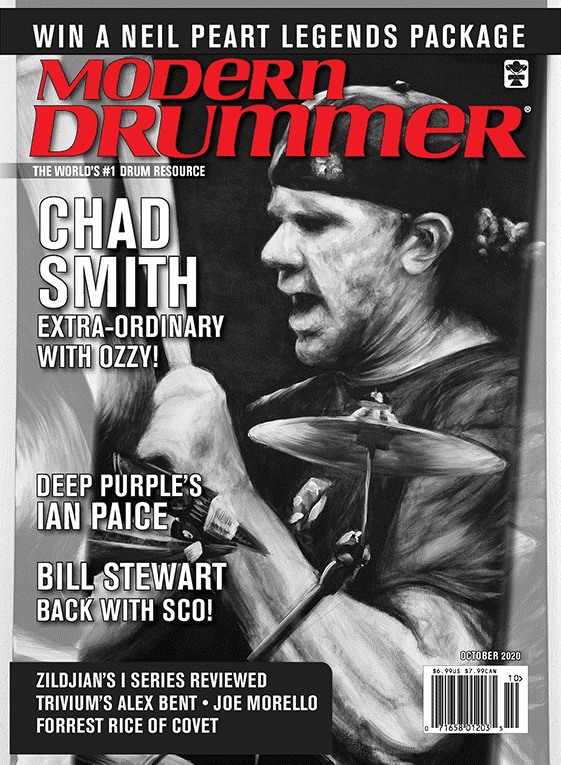Bill Bachman: Top 10 Rudiments Part 5: Six-Stroke Roll

The six-stroke roll is on our list of the twelve key rudiments because it contains unique hand motions that will open doors to many other rudiments. One of the most important benefits of studying the rudiments is developing individual hand motions that can be applied to other areas of drumming beyond a rudimental context. While that concept is true of the six-stroke roll, this particular rudiment is also incredibly useful when voiced around the drumset. Here we’ll look at the techniques you’ll need to play six-stroke rolls with strict 16th-note interpretation, as well as the slurred variation that morphs into a sextuplet.
The accents in six-stroke rolls are what gives them flavor (be sure to use downstrokes for these). Here’s the key to executing relaxed downstrokes: Begin the motion exactly like a free stroke, but just after the stick hits the head, partially stifle the stick’s natural rebound by squeezing the back of the stick with the fingers.
As you learn the six-stroke roll, I recommend making the downstrokes stop at an angle pointing down toward the drum, in order to maximize the dynamic and stick-height differential between the accents and double strokes. Once you master the motion, you can vary the degree of strictness of the downstrokes for different musical applications. Keep in mind that it’s important to avoid hitting the accents too hard or with tight strokes that drive through the drumhead. Stay relaxed! Advertisement
The diddles inside the six-stroke roll should be played low to the drum with a relaxed alley-oop technique. This is where the first stroke is played mainly from the wrist and the second stroke mainly from the fingers. It will look like the hand drops toward the drum on the first stroke of the double, and then your fingers snap out the second stroke by bringing the back of the stick to the palm of the hand. The hand should then lift up for the following accent. If your finger control still needs developing, remember that it’s better to play the diddles a bit weakly and bouncy than to stroke them out entirely with the wrists.
The technique used to play six-stroke rolls slowly is different from the one used to play them fast. The downstroke/upstroke technique for the accents and the alleyoop technique for the diddles won’t change, but you’ll need to pump your forearms when playing at faster rates. This motion will relieve the building tension in the wrists. When you play six-stroke rolls quickly, it will almost feel like you’re playing a continuous double-stroke roll with occasional non-diddled accents. Once you’ve mastered the six-stroke roll, your hands will be able to hit any accent patterns within a roll.
Practice the following exercises with a metronome (or along to your favorite songs). Don’t go any faster than you can play comfortably. You should also practice this rudiment using a slow-fast-slow breakdown evenly over one minute, gradually adjusting your technique as the speed changes. Advertisement


This article is culled from Bill Bachman’s popular Stick Technique book, which is designed to help players develop hands that are loose, stress free, and ready to play anything that comes to mind. The book is for everyone who plays with sticks, regardless of whether you’re focusing primarily on drumset, orchestral percussion, or the rudimental style of drumming. Divided into three main sections – Technique, Top-Ten Rudiments, and Chops Builders – Stick Technique is designed to get you playing essential techniques correctly and as quickly as possible. Also includes a bonus section two-hand coordination and independence.






